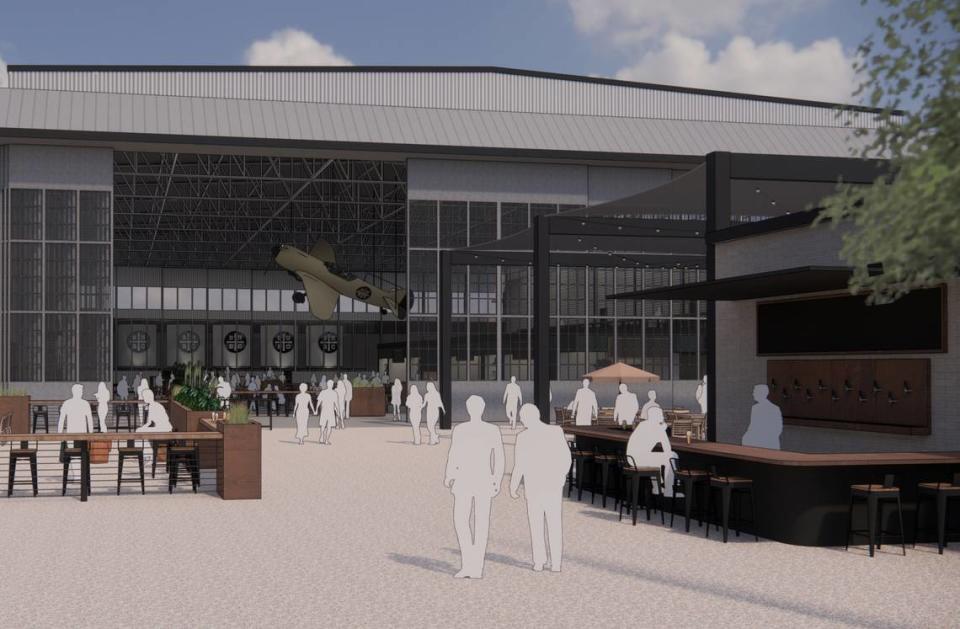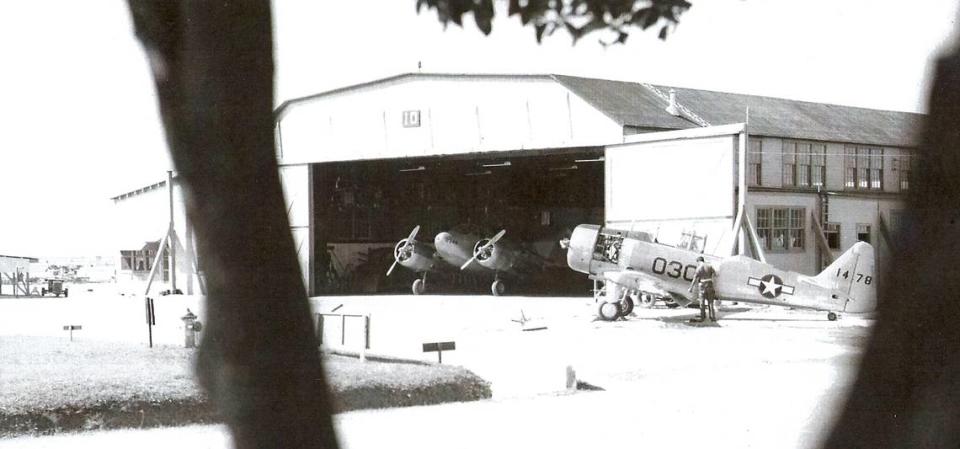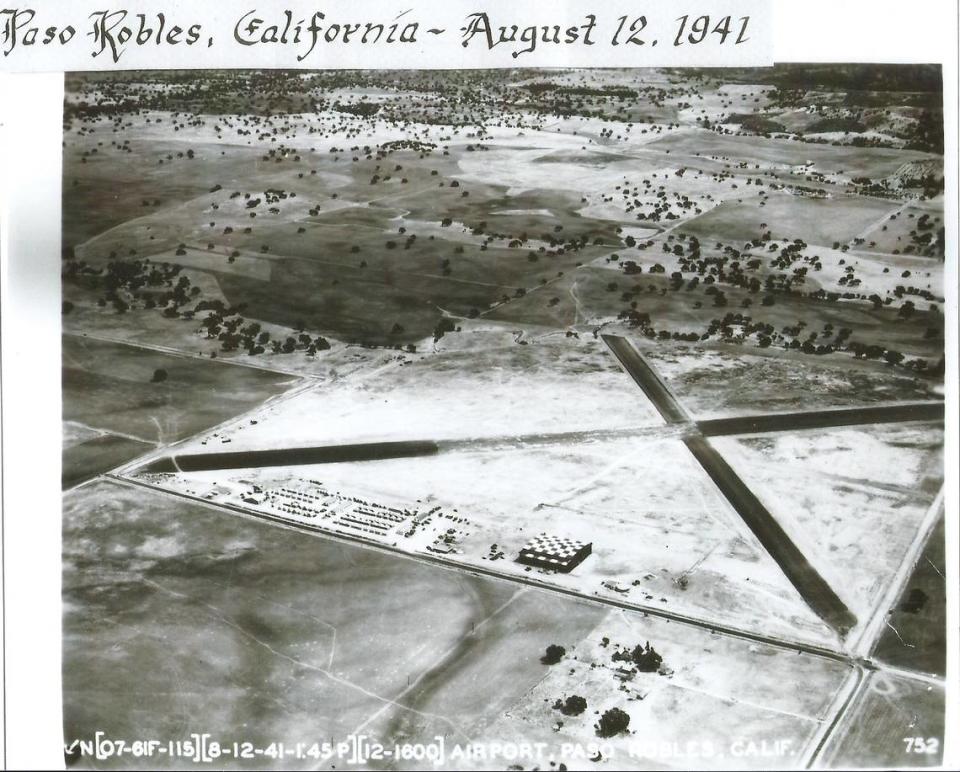Old Paso Robles airplane hangar will soon house brewery. How did airfield get started?
The last time an airplane landed at Sherwood Field in Paso Robles was likely during late December 1976.
Unfortunately, the airfield had been closed for more than two decades. The pilot mistook the old airfield for the active Paso Robles Municipal Airport runway less than four miles away.
The San Luis Obispo Telegram-Tribune reported on the mixup on Dec. 30, 1976.
The remains of the 1,000-foot-long runway were overgrown with weeds and cut with ditches but the runway paint with warning crosses had faded, failing to alert pilots that the field was closed.
The out-of-town pilot somehow missed the larger active field nearby and aimed for Sherwood instead.
The aircraft ended up in a backyard but no one was injured.

According to the Telegram-Tribune article, Sherwood Field was the site of the Paso Robles airport until 1951 when the city moved operations to the current location north of Highway 46, a former World War II military airport.
Now most of the Sherwood area is developed and the former runway can no longer be seen from the air.
Popular Paso Robles craft brewery BarrelHouse Brewing Co. recently announced that it will be opening a new production facility and taproom in a former Sherwood Field airplane hangar.
Longtime Tribune reporter and columnist Phil Dirkx wrote about Paso Robles airport history in his Over The Hill column on Sept. 15, 2006:

Paso airport was factor in eastward push
In a way Orville and Wilbur Wright, the inventors of the airplane, are responsible for the shape Paso Robles is now in.
When the city incorporated in 1889, it lay entirely west of the Salinas River. Today the biggest part of Paso is east of the river.
Paso Robles didn’t start spreading across the river until 1952. That’s when it annexed a former airfield near the intersection of what is now Creston and Niblick roads.
The airfield was started in the 1920s to serve later versions of the Wright brothers’ 1903 invention.
That 1952 annexation started the ball rolling. Since then, the vast majority of the city’s growth has been east of the river.
The airfield’s history goes back at least to 1929. That year a directory of landing fields said the Paso Robles airport had a 2,000-foot main runway and one small hangar.
In April 1940, the field’s owner sold it to the city for $9,000. It had two 150-foot-wide, oiled runways. One was 3,400 feet long. The other was 1,600 feet.
On Aug. 1, 1940, a Civilian Pilot Training school began at the field with 50 students, including four women. But America was also preparing for its likely entry into World War II, so two months later the Army took over the airport. All private planes were ordered removed.
The Army constructed improvements, including a big metal hangar. That hangar still stands as the central core of the Ennis, Inc., printing plant at 298 Sherwood Road.
The Army connected the field to electric power lines, telephone cables and city water. The Army also built a sewage treatment plant. All that made the field ready to serve airplanes. It also made the field ready to become a housing tract.
The first military unit stationed at the field was the 115th Observation Squadron of the California National Guard. The airport was named Sherwood Field in honor of that squadron’s first commanding officer — Capt. George Sherwood. He was killed in 1935 when his plane crashed while delivering civilian mail.

At the end of 1941, the Army turned the airport over to the Navy, which used it only as an emergency field. When the war ended in 1945, the field reverted to city control, but the field’s days were numbered.
Competition was coming. A larger airport —the Estrella Army Air Field — had been built in 1943 four miles to the north. Two years after the war ended, that field became a public airport and the local aviators moved to it.
Paso Robles’ 1952 annexation of Sherwood Field was called the Sherwood Annexation. A housing tract called Sherwood Acres was started that year in the annexed land. Houses sold for around $8,000. Some were right across the street from the big hangar and their street is actually the hangar’s concrete apron.
Other parts of the airfield are now the city’s Sherwood Park and the Sherwood Industrial Park. A Sherwood Forest playground is under construction. Capt. Sherwood’s name won’t be forgotten.
Want to learn more?
To learn more about local aviation history, Estrella Warbirds Museum in Paso Robles is a good place to start.
The museum is hosting its 14th annual Warbirds Wings & Wheels event on May 13. For more information, go to ewarbirds.org/www14/index.shtml

